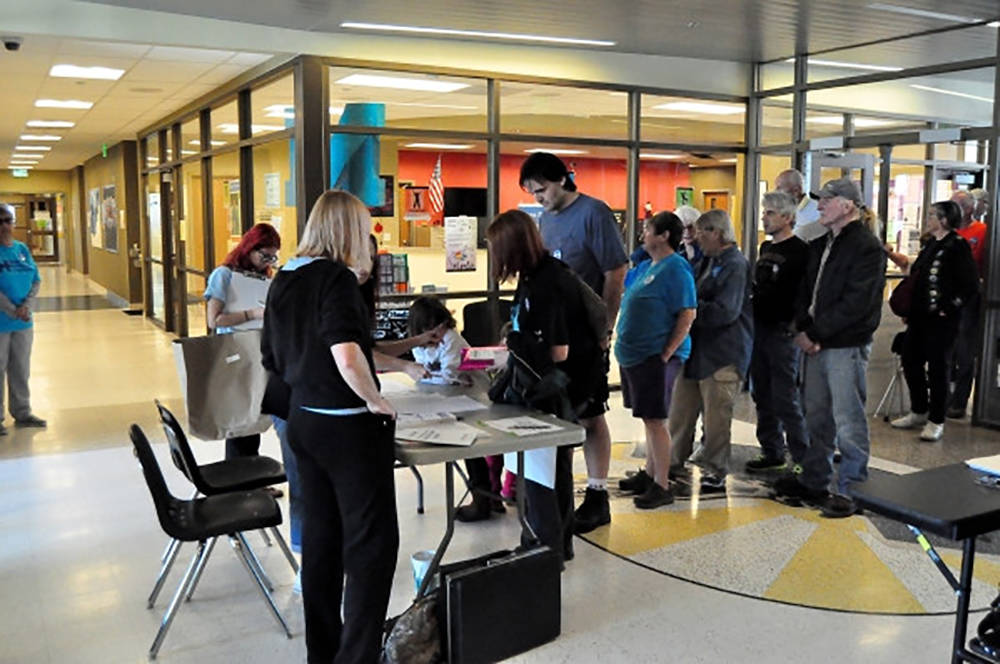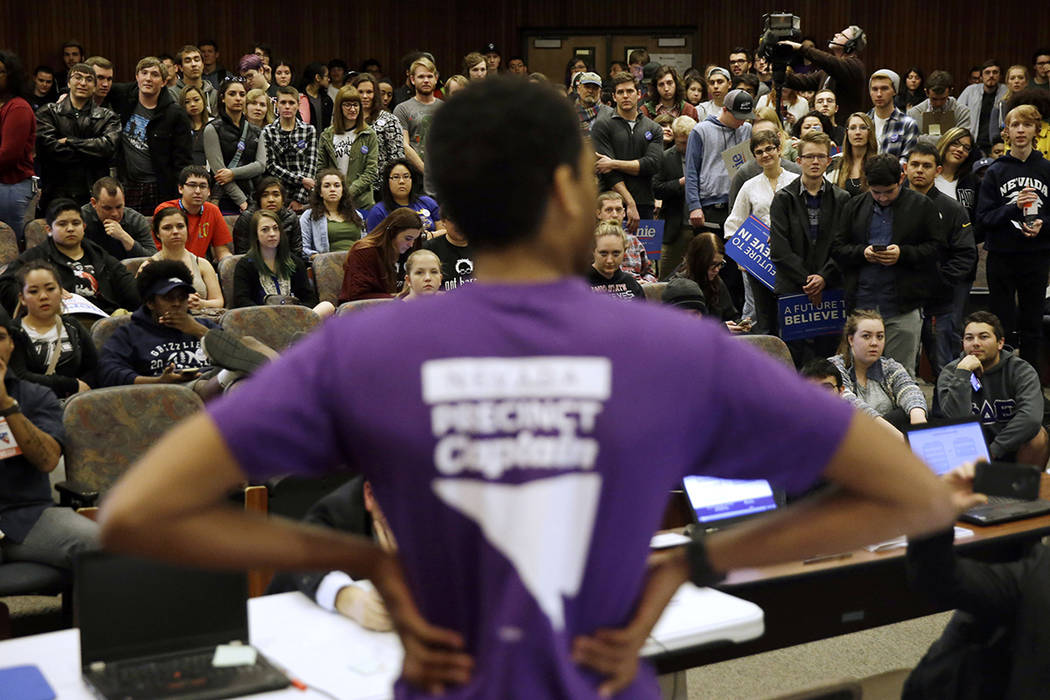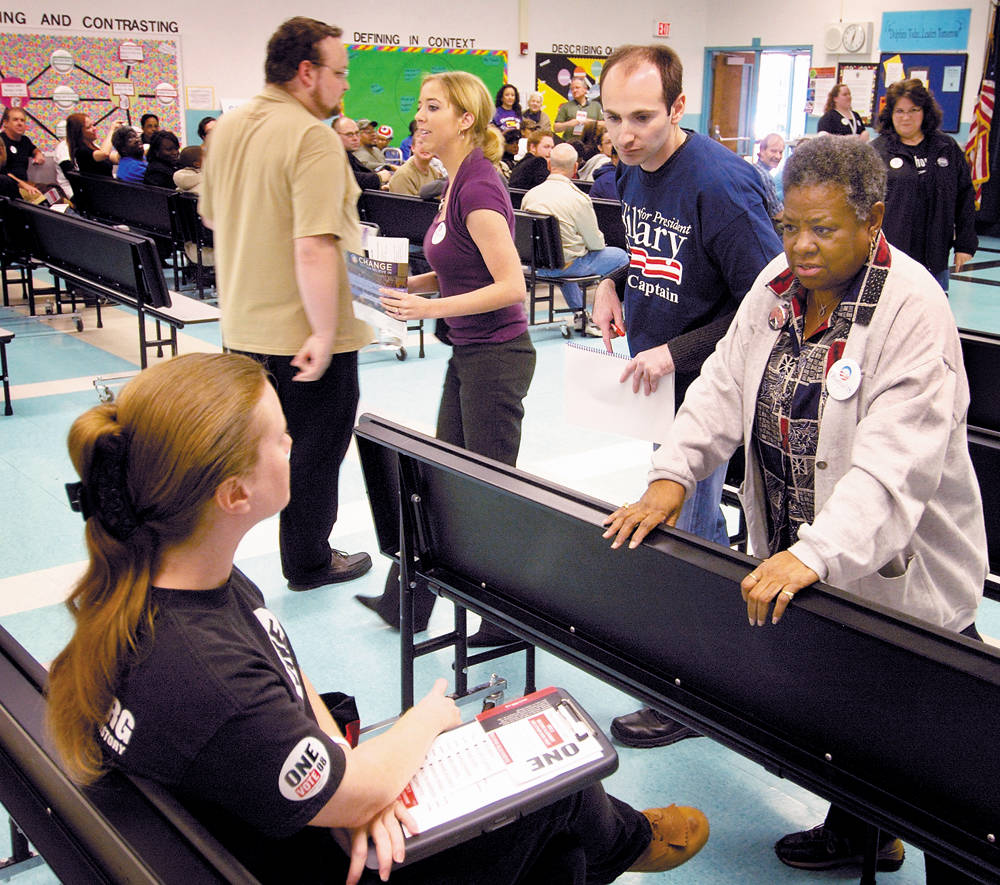Plenty of drama has marked Nevada early caucus history
Nevada’s presidential caucuses have seen their share of trouble since the state moved its Democratic contest to an early spot on the presidential nominating calendar in 2008.
Then-Senate Majority Leader Harry Reid won that spot for the state, reasoning that the early caucus states were traditionally dominated by mostly white Midwestern and Eastern states that didn’t represent the demographics of the modern Democratic Party.
Nevada, Reid argued, was a racially diverse Western state, with a large population of immigrant, union and working-class voters.
In addition, Nevada’s use of the caucus balanced the first four states in terms of methods for choosing candidates: two caucus states (Iowa and Nevada) and two that used primary elections (New Hampshire and South Carolina).
Reid had a political motive as well: He reasoned that a caucus — with its requirement for in-person appearances — would be a boon for registering voters in Nevada. He was right about that: On caucus day that first year, 30,000 new Democrats registered with the party. By the close of registration before Election Day 2008, Nevada Democrats outnumbered Republicans by more than 100,000 — a feat the party hasn’t managed since.
First fights
But Nevada’s first caucus was marred by fighting between the campaigns of the two major candidates, then-Sens. Barack Obama of Illinois and Hillary Clinton of New York.
The Nevada State Education Association, which supported Clinton in the 2008 race, sued the Democratic Party, saying the at-large caucus sites on the Strip were unfair and could end up awarding a disproportionate number of delegates over neighborhood precinct sites.
Culinary Local 226, which supported Obama in 2008, was thought to benefit from the Strip sites, since they allowed union workers to quickly and easily caucus during their work shifts. That led to charges the process was being slanted toward Obama.
Ultimately, a federal judge ruled that political parties, as private organizations, could set the rules for their own organizing events, provided those rules were not discriminatory.
The caucus itself — which saw about 118,000 people turn out, far more than expected — was riven by allegations of overcrowded locations, long lines, sites that ran out of caucus preference cards and a process that took too long. Each major campaign levied charges of voter intimidation against the other.
In the end, Clinton won the Nevada primary in 2008, winning more overall votes, but got just 12 pledged delegates to Obama’s 13 because of the way caucus math apportions delegates.
GOP recount of 2012
In 2012, Republicans complained that their caucus was not well-advertised in advance, and thus the turnout was about 33,000, much lower than the party had expected. And while the caucus went well in most of Nevada’s 17 counties, it ran into serious problems in Clark County.
The problems led to the county party declaring it would manually recount every caucus ballot, by hand. That process stretched from caucus day Saturday into the late-evening hours on Sunday.
Party officials said they didn’t want to repeat that cycle’s Iowa disaster, when Mitt Romney was incorrectly declared the winner on caucus night, only to have the party admit two weeks later that Rick Santorum had won.
So the recount went on under the watchful eyes of candidates’ staffers. Some handwritten ballots (used because precinct sites ran out of official ones) were stored in a “problem box” that received extra scrutiny.
Ultimately, Romney eked out a narrow victory, winning just more than half the Nevada vote and 14 national delegates. The delay in counting brought threats of a lawsuit from the campaign of then-Texas Rep. Ron Paul, but ultimately, his state director declared he was “content” with the final outcome.
Switching to a primary
In 2014, Republicans won control of the Nevada Legislature for the first time in decades and moved to replace the caucus with a primary.
Senate Bill 421 would have scrapped the caucus process entirely in favor of a presidential preference primary, to be held on the last Tuesday in February of every presidential election year. The elections would be a one-day affair, with no early voting or sample ballots distributed ahead of time. Absentee and military ballots would be allowed.
Only registered members of a party would be allowed to vote for that party’s nominee, and delegates to the national convention, who would be nominated in party meetings, would be bound at least on the first ballot to vote for the candidate who won Nevada’s presidential primary.
The costs of the election would be paid out of state contingency funds.
And in a provision designed by Republicans to attract Democratic votes for the measure, either party could opt out of the early primary in favor of a caucus if its national committee chairman or chairwoman asked to do so.
The measure made it all the way through the Senate and the Assembly and was amended three times. It appeared Republicans had mustered the votes to pass it, so much so that Reid himself called to lobby a Democrat who was wobbling and might have supported the bill.
Ultimately, the bill failed to pass, and the caucus system remained intact.
Contact Steve Sebelius at SSebelius@reviewjournal.com or 702-383-0253. Follow @SteveSebelius on Twitter.




















